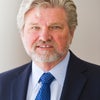This weekend, people across the country will celebrate the founding of our nation with family, food, fireworks, and music, grateful we live in a country that embraces the freedoms articulated in our Declaration of Independence -- the unalienable Rights to Life, Liberty and the Pursuit of Happiness. We will honor, through parades and the display of our American Flag, the high price that was paid during the War of Independence by the men and women who risked their lives to found the United States of America -- a price that is still being exacted from millions of service members, veterans, and their families today.
Many people might think the role of the arts in the founding of our country is placed squarely in the "Happiness" realm -- but the link goes much deeper for our Founding Fathers, and even the U.S. military itself.
We know the arts inspire -- George Washington commissioned a performance of Addison's Cato at Valley Forge to inspire his Continental Army. Passages from this play led Patrick Henry to utter, "Give me liberty or give me death" and Nathan Hale to state, "I regret that I have but one life to give for my country" -- two of the most often-repeated American patriotic quotations.
Beyond inspiration, the arts were used as a tactic to train this new army. Military bands in America started as an artillery regiment under the command of Benjamin Franklin. Asked by Gen. Washington to help bring discipline through movement to the Continental Army of 1778, Franklin brought Prussian Officer Baron Friedrich Von Steuben to Valley Forge to teach the art of the drill, which has been core to military preparation ever since.
Long before the telegraph or radio, these musicians provided communication for America's early militia-sending out calls that it was time to assemble and take up arms. Fife and drum units provided sound signals to soldiers to execute orders when smoke from artillery prevented visual cues.
As a nation, we are moved by the music for our national anthem and we stand up for a poem, the "Star Spangled Banner." We salute a visual art creation called Old Glory -- which conveys without words the hopes, dreams, and history of a new nation, and over time has evolved in its design and meaning with new stars and stripes.
America's challenges have evolved, but the potential of the arts to inspire, educate, and heal are as strong as ever. Through Americans for the Arts' work on the National Initiative for Arts & Health in the Military, we see the arts helping wounded, ill, and injured service members and veterans recover and reconnect to their families and communities.
Recently I was reminded of that power in Nashville, TN, during the "Engaging Military Veterans through the Arts" session at our annual convention, and in a chance encounter with a psychologist I met at a reception at musician Ben Folds' studio. He shared with me the story of a nonprofit organization called SAFE: Soldiers and Families Embraced that works with service members, veterans, and their families near Fort Campbell, near the Kentucky border. The program offers retreats to veterans, matching songwriters with veterans to explore their post-deployment challenges.
Healing from the trauma of war is intensely personal yet not without its impact on the family and community. Recognizing this, the Frist Center for the Visual Arts in Nashville invited the SAFE combat vets to serve on a task force to help them present difficult images sensitively in their "Goya: The Disasters of War" exhibition.
As they have been since the beginning of our great nation, the arts are ubiquitous in our communities and in our military. The Pentagon is filled with paintings, sculptures, photos, and art that not only commemorate the fallen but help explain military actions and the political environment leading to them. The artists are often military service members themselves, as in paintings by Ulysses S. Grant and William Tecumseh Sherman I once saw at the West Point Museum, and by the numerous illustrators and photographers embedded in military units in all our historic conflicts.
The more recent power of the arts to convey an emotion and tell a story is on display now through November, with the Veteran Artist Program's All-Veteran Visual Arts Exhibit at the Pentagon. And, in communities across the country, it is not unlikely that the concert you hear on this Fourth of July weekend may come from one of the more than 100 U.S. Army Active, Reserve, and National Guard ensembles.
I like to think Washington and Franklin would be proud as we celebrate our great country this weekend with music, with art, with community. It's a very American thing to do.
